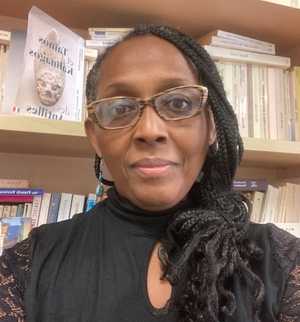Today, we are happy to bring you our conversation with M. A. Salvodon, translator of Désirée Congo
What inspired you to translate this book?
One inspiration was my Haitian family who loved Haiti deeply and never stopped talking about Haiti – even in exile. We spoke Haitian Kreyòl, we ate Haitian food, and we listened to Haitian music. My father loved to regale us with stories about the male leaders of Haitian independence. Another inspiration was my experience translating Rosalie l’infâme by Évelyne Trouillot, which is a very powerful novel set in mid eighteenth-century Saint Domingue. When I first read Désirée Congo, my interest was piqued and I plunged right in! I was very moved by the characters’ ability to claim their lives as their own, even in the context of slavery, especially in the context of slavery. They were always fully human and Évelyne Trouillot ensures that her twenty-first readers always remember that fact.
What did you learn and what are you hoping readers will learn from your book?
I learned more about the role of Haitian women in the fight for Haitian liberation. Free and enslaved women played roles in the long war of independence, both those born on the island of Saint Domingue and those who survived being transported them from the African continent to Saint Domingue. I knew about women who had played different roles during the Haitian Revolution, like Catherine Flon who is known to have sown the first Haitian flag. But I had never read any book that explored the inner lives of numerous women who took up arms and enabled Saint Domingue to win the fight for independence.
What surprised you the most in the process of translating your book?
I didn’t expect to read a love story between two enslaved women in a novel about the Haitian Revolution. It might be anachronistic to call them “queer,” but I think that the depiction of their strong emotional bond, the scenes of tender lovemaking, and the family created by these two women are very moving ones. Though short-lived, their love story recalls the last lines of Audre Lorde’s poem, “A Litany for Survival”:
So, it is better to speak
remembering
we were never meant to survive.
I imagine these older, enslaved women in Saint Domingue finding comfort in each other despite the brutality of their everyday lives. Every caress is an act of courage. Every look is an act of defiance. Their own discrete, intimate liberation mirrors Saint Domingue’s independence – hard-fought, unexpected, yet possible.
What’s your favorite anecdote from your book?
This translation helped me discover my appreciation for reading out loud. Even when members of my family were around, I’d read the passages in French and then I would read the same passages in English, bringing the scenes to life, giving them voice. I recently went to the Haitian Studies Association conference where I gave a talk on the novel, and read excerpts of the original French and my English translation. Someone at the end of the talk mentioned that I should do the audio book reading – and I loved that idea!
What’s next?
I plan to finalize the translation of another novel this year. I’m also hoping to get back to collage-making. I mostly use paper, but also incorporate other material into the pieces I make. It’s the tactile nature of the collage-making that I find very satisfying: assembling different pieces of colored paper, fabric, string, buttons and other small objects together brings me great joy, and reminds me of the translator’s assembling of different images, words, meanings and sounds from one language and putting it back together in another language. Translation, like my collage work, is a process of creating something new from a pre-existing book written in a different language. I think of literary translation as a uniquely evocative process that enables the creation of a beautifully recycled text.





